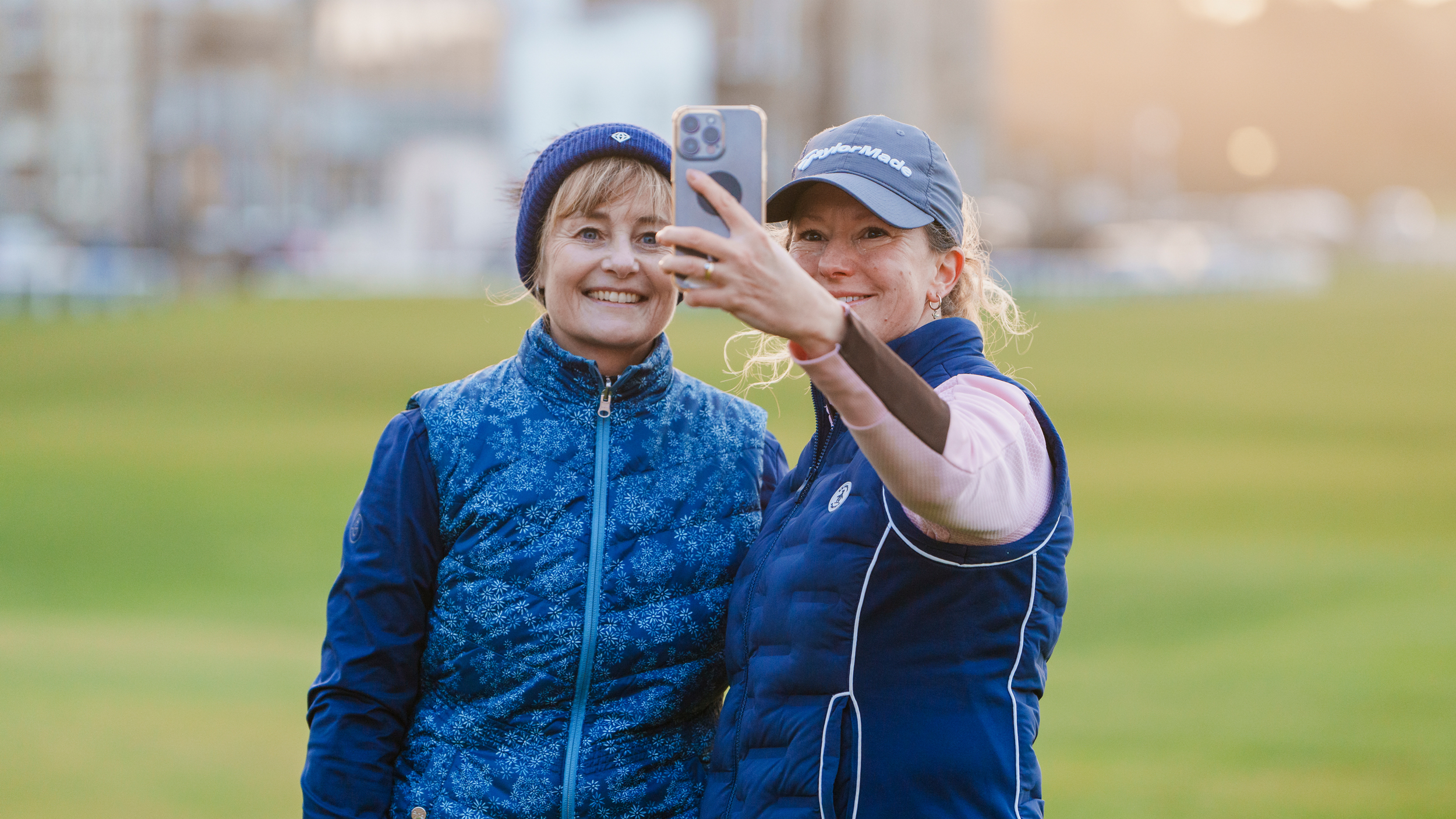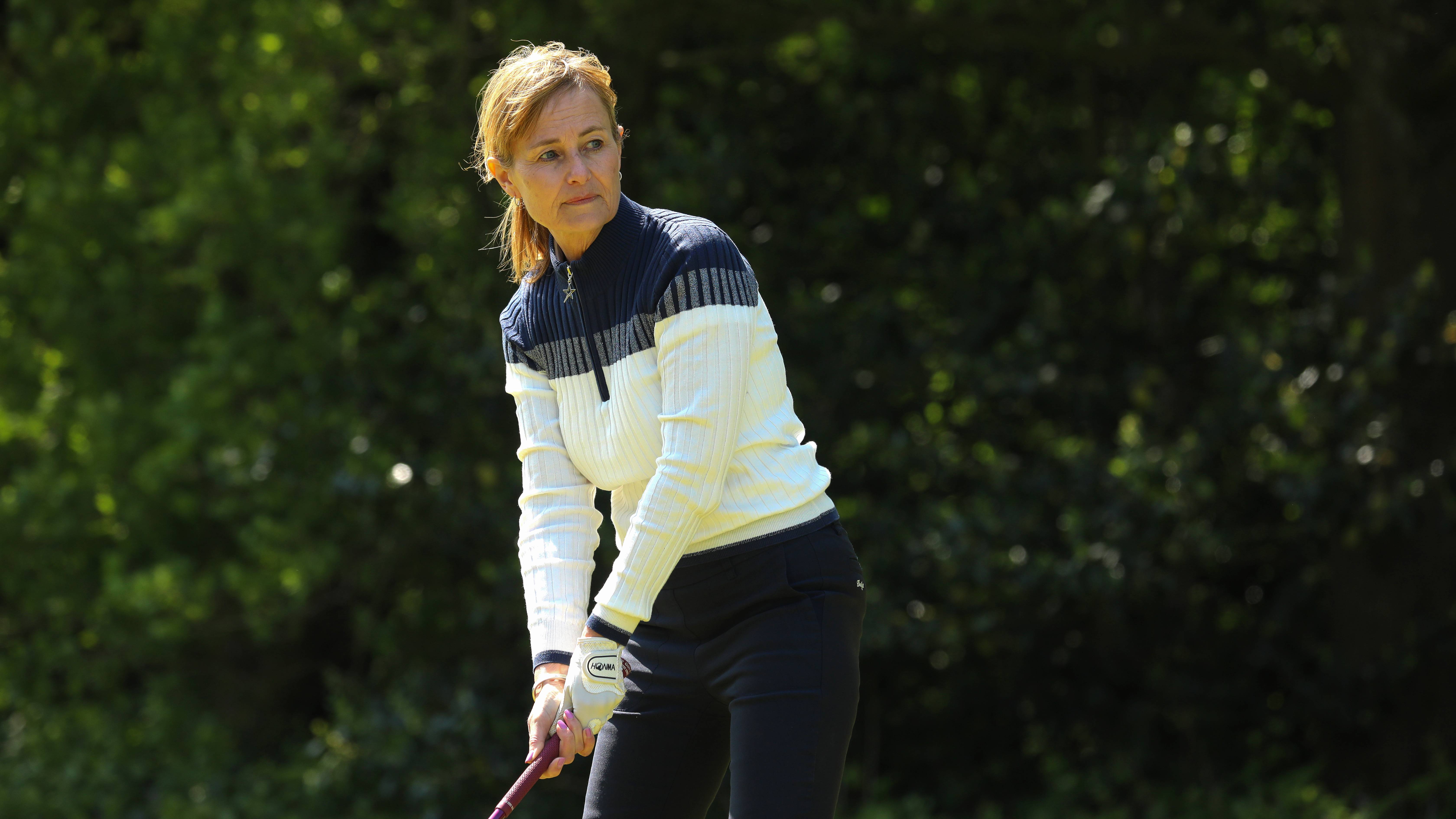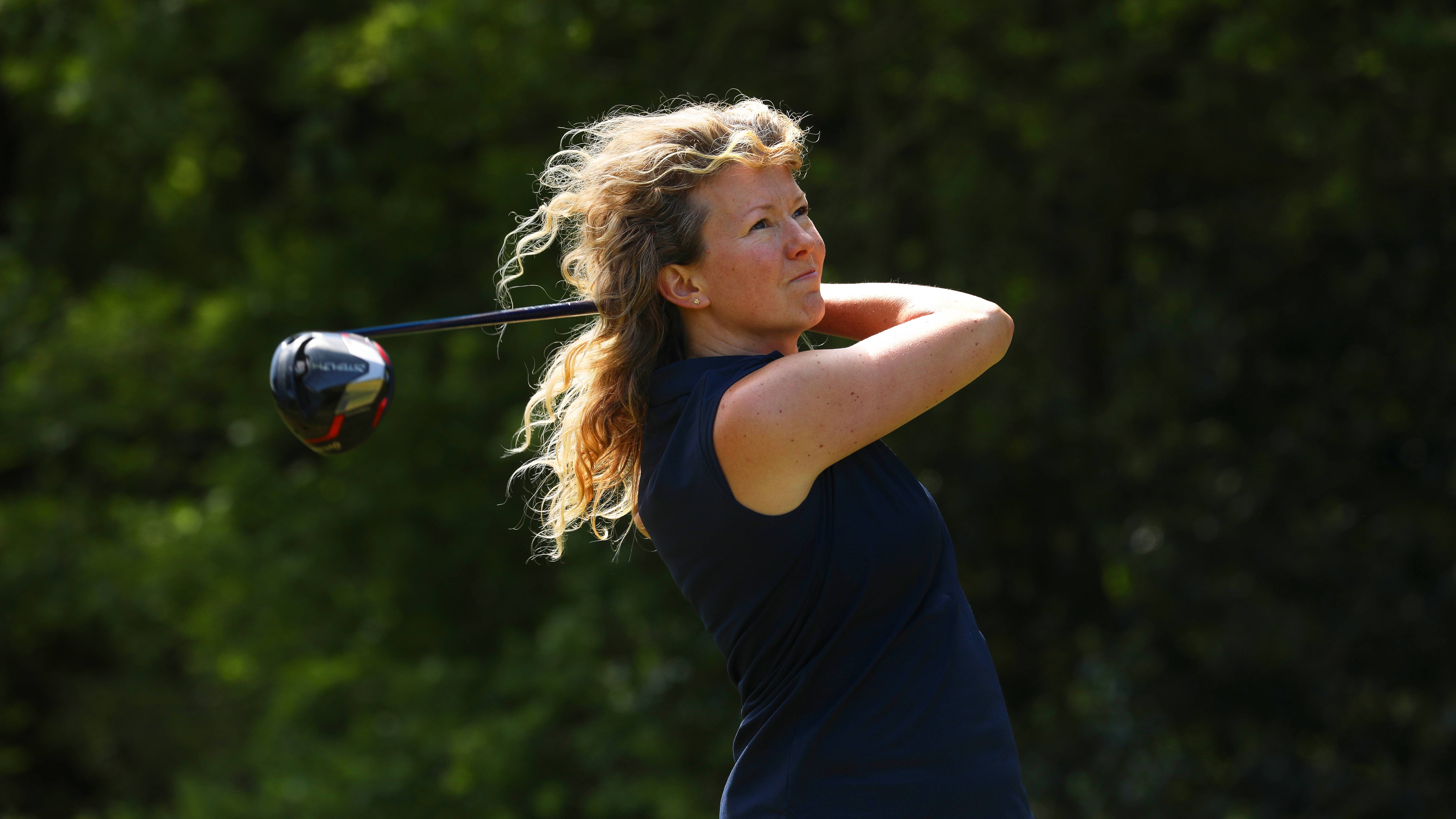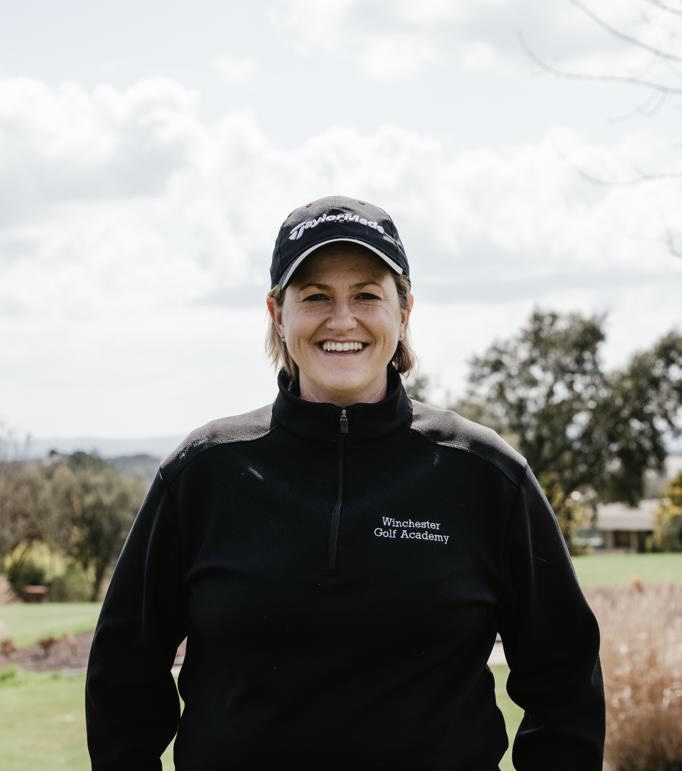
Getting started in golf is an exciting time but it can also be overwhelming. There are so many options for learning the game these days, from women’s 'get into golf' group coaching sessions to online tutorials, one-to-one video swing sessions and much more. Some women are introduced to golf by chance, others by choice, many by a friend, work colleague or golfing partner, but the majority pick up the game by playing with casual golfers rather than expert players in those first few months.
Some of Golf Monthly's female contributors were discussing this topic recently and we all agreed that if we had the chance to go back in time, we would do things very differently. So here are our do’s and don’ts, plus a few helpful pointers for starting out in golf.
Alison Root, GM Women’s Editor
1. Take Lessons From A PGA Pro
The biggest one for me is to have had golf lessons from a qualified professional. Most women, like myself, might start playing because their partner plays. While they might be a decent golfer and can instruct the basics, for long-term benefits, I would always recommend having a series of lessons from an expert!
Playing a lot of tennis growing up, I had good eye-ball coordination, so I managed to pick the game up and get down to an 18 handicap in a reasonable amount of time, but I manufactured a swing that has since been hard to remedy.
2. Get Custom Fit For Clubs
Perhaps not my very first set, because you don't know whether or not you're going to take to the game, but as soon as you've got the bug and want to take your game to the next level, I would get custom fit so you've got clubs that are perfectly suited to you and your game - it gives you so much more confidence.
We are far more educated nowadays about custom fitting, but I always believed it was for better players only, and realise now that's not the case, and playing with the wrong clubs can really have a negative impact on your game.
3. Play More Fun Golf
In my early years as a golfer, club member and also a working woman, my only opportunity was to play at the weekend and I always had a card in my hand, putting so much pressure on myself to try and either play to, or reduce my handicap.
When I look at women coming into the game now, most of them are not even thinking about a handicap, there are so many different options of how to play golf and most importantly, have fun. That's not to say I don't want to play in competitions, I will always be competitive, but I should have relaxed more about my golf.

Carly Frost, Single Figure County Player
1. Avoid Group Lessons
This might sound controversial, because a lot of women love the social side of learning in a group, but I think when you are a complete beginner you definitely need individual, one-to-one lessons with a PGA professional. As a junior beginner, my only lessons were in a group. As fun as these sessions were, there were often 10 or more kids in the group, so we only had a few minutes each with the coach looking at our swing in that hour. Just enough time for one tip.
To be honest, I didn’t get the in-depth technical advice I needed at this formative stage of my swing technique and consequently had to make drastic swing and grip changes a few years later. Many mistakes still haunt my game now including my weak grip. The trouble is, the advice was given by the young, inexperienced coaches. On the odd occasion the more knowledgeable head professional covered a lesson and the advice I was given was noticeably more detailed. So if I started again, I would take individual lessons first to get the fundamentals right and then I’d play with the best players in the club.
2. Use Video To Practice With Purpose
Technology wasn’t readily available when I was a junior. I only remember having my swing filmed once aged about 15 in south west girls training. I was given a VHS video cassette of my swing to take home! When I practiced I had nothing to refer to, no feedback on what I was trying to improve/change/achieve. Smart phones have changed everything. I wish I could go back in time and have a phone in hand and record my practice to check that I’m making the moves correctly. There’s also some brilliant coaching apps and software out there to use now.
3. Start With The Short Game
If I started golf again, instead of trying to focus on the golf swing, hitting balls at the driving range, I would devote the first few months (and lessons) to learning all the shots I needed to play around the greens first - putting, chipping and definitely bunker play. The short game is often the last thing we learn and yet the best players have a brilliant short game and it’s where you make your score. Most of my 10-year-old son’s early years were spent with a plastic club in hand chipping in the garden and learning to putt on crazy golf holes. Consequently he has refined short game skills way beyond his years and peers.

Katie Dawkins, GM Top 50 Coach
1. Join A Community
I’d join the women’s groups and communities so fast. These women have it right. They’ve formed a community and really have fun with this game. I’d want to ensure that my main goal wasn’t to play serious golf all the time but just to have fun. Play lighter golf and often a shorter version in varying environments - simulators, course and golf trips. Everyone has a blast with the game these days and I definitely entered a world of achievement and handicap goals when I took the game up.
2. Use Fewer Clubs
I’d accept I could use fewer clubs than a full set and opt for good quality clubs but less of them. My Jessie Valentine wooden 4 wood was my go-to off the tee and fairway when I started and then Wilson 1200 irons, but though a full set, I rarely used them all, and the inconsistency in the density of a wooden club hampered me at the start.
I’d opt for a driver, 4 hybrid, 7, 9 and SW, then a decent mallet putter from TaylorMade or a similar brand. I’d get fitted and make sure my kit fitted me. This would have lessened swing faults and inconsistency. Pair these with a lightweight pencil bag with stand and double straps and I’d be ready to go. Less is more at the start and I had too many decisions to make. It was all so heavy, I’m sure that’s why I had back issues.
3. Don't Worry About Dress Codes
I’d forge my own fashion and not worry about being told off. So with that I’d l join a club that has gender neutral tees and a less rigid dress code. A club rather like my perfect golf club. Actually I’d play nomadic golf and not be a member, not worry about handicaps to start and just go and enjoy playing as many different courses as I could. Variety would be the main aim of my golfing game and I’d use golf as a vehicle to travel the world instead of being told where I had to go depending on where tournaments are being held.

Emma Booth, PGA Professional
1. Don't Worry About Fitting In
I didn't fit in with the juniors at my home club, being one of only three girls amongst the boys, and I would regularly beat them which would really rock the boat! Thankfully things have come a long way now as being beaten by a girl back then was considered a horrendous and embarrassing offence. I was often made fun of and bullied so they would be the first on my list to tell... jog on.
I didn't fit in with the click of the England girls' squad training either, from the adults at the top down to the girls in the squad. To use a modern term for it the culture was 'toxic' to the point where it did me more harm than good. So, I would not put so much pressure on myself to fit in and be there, of course to have 'England U16/18s on your golfing CV is nice, but it is not worth sacrificing your sense of self-worth.
2. Get The Right Equipment
From the age of 13 I was playing with men's length steel-shafted irons and woods. They were too heavy, but I still made them work and won many competitions! But my goodness, it would have been easier with the right length and graphite weighted shafts.
Junior golf equipment has come a long in 30 years, or from 'the olden days' as my girls call it. You can now get clubs fitted that are weighted and balanced to suit all your golfing needs. Custom fitting still seems to have the misconception of being an expensive luxury when really it isn't. The only thing it costs you is your time. Regardless of your standard of golf, get custom fitted when investing in clubs, it really does make the world of difference.
3. Understand My Cycles
Nothing affected my performance in golf the way my period did, but it was just never ever spoken about, which when you think about it is absolute madness! Every month I suffered with crippling pain and sickness to the point where if possible, I would not enter competitions, but I was unable to miss the 'big' ones.
In the days leading up to my period, my balance, coordination and ability to read putts was very badly affected. So profound was the impact on my performance, I had a piece written about my miraculous comeback in making the cut for the English Ladies Stroke Play. I shot in the 80's on the first day then the next day shot 73 and made it through a four-way play-off!
I now have the peri-menopause and all the joys that brings to look forward to, oh to be a woman! My advice to all women, regardless of where you are with your menstrual health, is to track your symptoms and track your moods because it really can impact your performance.

So there you have it, the three things we would do differently if we could travel back in time and start golf as beginners again. Of course, hindsight is part of life, to look back and think about what you would do differently is great, but in truth, the tough times through learning are what shaped us into the golfers we are today.
In reality, the more we thought about it, the more we realised how many things there are to suggest to beginners. The list really is rather long! For instance, we haven’t touched on the Rules of Golf, yet many beginners don’t know where to go to understand and learn them. The R&A has a rules 'hub' and a brilliant app you can download to help.
There’s also the opportunity to go to watch live tournament golf and on TV. With the popularity of the women’s game on the rise, equality evolving, it’s so easy to access these things.
It’s entertaining and helpful to watch and learn from how the world’s best women play the game. Pick a favourite pro, follow them on social media, model and replicate their swing, admire their short game skills. Then marvel at the work that goes into making them the world’s best - the practice, the fitness, the nutrition, the mental side of the game.
All things to think about if you are serious about getting good at this sport. Of course, most importantly of all, don’t forget to have fun!







